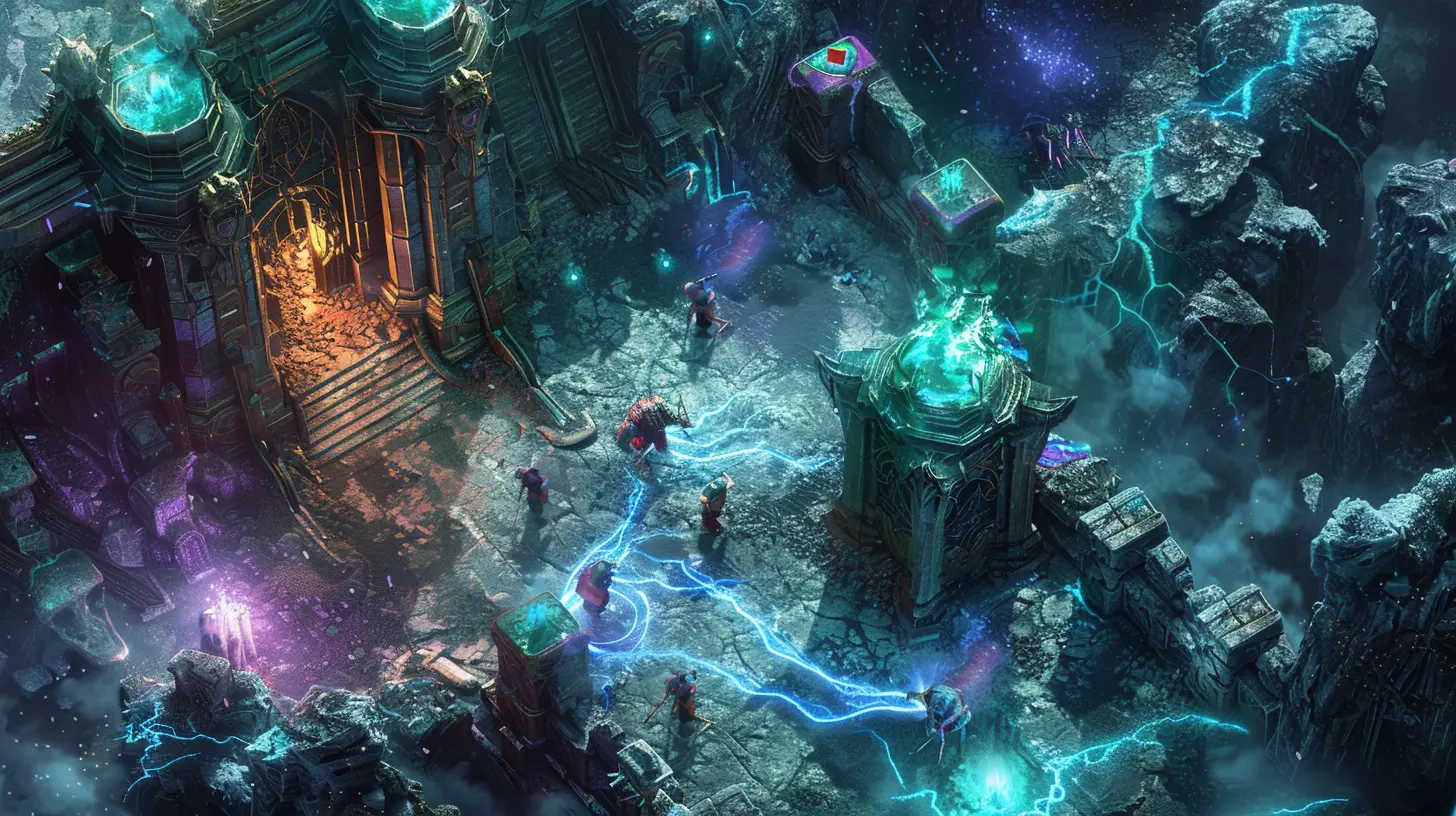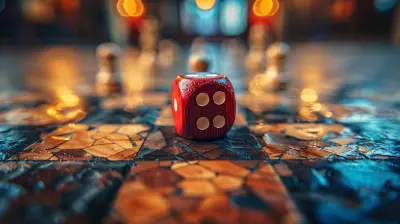Precision Tactics: How to Perfectly Time Your Moves
20 June 2025
Timing, my friends, isn’t just for comedians and NFL quarterbacks—it’s the secret sauce to winning in almost every game. Whether you’re dominating a battle royale, outmaneuvering an opponent in a chess match, or even just trying not to crash and burn in that pesky Mario Kart rainbow track, perfect timing can mean the difference between sweet, sweet victory and the crushing agony of defeat.
But hey, don’t sweat it! Nailing the art of timing is totally doable. And today, we’re about to dive into the nitty-gritty of how to perfect those moves with precision tactics. Ready? Let’s crack some knuckles (figuratively, of course) and level up your game.
Why Timing is Everything (No, Seriously, EVERYTHING)
Ever heard the phrase, "Timing is everything"? It’s not just some cliché your mom throws around when she’s trying to sound wise. When it comes to games, timing is basically your invisible co-op buddy. It’s the stealthy ninja hiding behind every successful combo, every perfectly timed dodge, and every clutch headshot.Think about it:
- Miss the right moment to counter in Dark Souls, and you’re basically toast. Literally, burnt toast.
- Jump too early in Super Mario Bros., and you’re plunging headfirst into a pit of despair (and Goombas).
- Hit the wrong cooldown in League of Legends, and you’re about to get roasted harder than your last meme-worthy mistake.
Timing isn’t just about pressing buttons at the right time—it’s about reading the room, predicting your opponent, and reacting with the grace of a caffeinated cat. 
The Science Behind Perfect Timing
Alright, I’m not gonna bore you with a ton of science-y mumbo jumbo, but here's the deal: your brain is amazing. Like, genuinely incredible. Timing in games boils down to two major things: reaction time and pattern recognition.1. Reaction Time
This is how fast your brain can yell, “Oh crap, MOVE!” and get your hands to actually, well, move. Reaction time depends on practice, focus, and not having Dorito dust all over your controller.
2. Pattern Recognition
Gaming is basically one big “spot the pattern” game—like those childhood puzzles where you had to find the differences, but with way more explosions. Recognizing patterns (like boss attacks or enemy movement) helps you predict what’s coming next. It’s like having a crystal ball, but cooler.
The more you practice, the more your brain becomes a lean, mean pattern-spotting machine. It’s like giving your reflexes a cheat code. 
5 Proven Precision Tactics to Perfectly Time Your Moves
Mastering precision timing isn’t about being born with superhero reflexes—it’s about strategy. Here are five laughably simple but ridiculously effective tactics to help you slay:1. The Waiting Game: Patience is Key
Have you ever tried to dodge-roll into a boss fight like you’re some kind of berserker, only to get smacked into next week? Yeah, me too. Rushing usually equals disaster. The first rule of perfect timing? Chill out.Wait, observe, and get a feel for your opponent or environment. Are they predictable? Do they have a tell before they attack? Think of it like trying to time the perfect sip of hot coffee. Too soon, and you’ll burn your mouth. Too late, and it’s lukewarm sadness.
2. Watch for Patterns: Bosses Don’t Improvise
Pro-tip: The bad guys aren’t jazz musicians—they don’t improvise. Most enemies, bosses, and even those pesky AI racers follow a set routine. Watch them. Learn their habits. Recognize their patterns like you’re Sherlock Holmes solving a case.Does the boss always do a wind-up before their big attack? Cool, dodge on the third grunt, and BAM, you’re golden.
3. Practice Makes Precision
Unless you’re some gaming prodigy blessed by the gods of button-mashing, you’re gonna need practice. Lots of it. Repetition is what turns an average player into a certified legend.Spend time in training modes, replay tricky levels, or even challenge your friends to duels where you focus solely on timing. Muscle memory is like your gaming autopilot—teach it well, and you’ll be unstoppable.
4. Use Audio and Visual Cues
Gaming is a multi-sensory experience, so don’t just rely on your eyes. Listen for those sound cues too!- In rhythm games like Beat Saber, the beats guide you like a metronome with attitude.
- In FPS games, footsteps can be the ultimate "look behind you" hint.
Visual cues (like a boss glowing red before an attack) are just as important. Your senses? They’re your best homies in the quest for perfect timing.
5. Take a Breather: Stop Rushing It
Okay, real talk: ever notice how your timing gets worse the angrier or more anxious you get? Yeah, rage-quitting vibes don’t exactly lead to precision moves. Step away, grab a snack, and come back with a clearer head.Sometimes, the secret to perfect timing is letting yourself be human. Mistakes happen. But taking care of your mental state will help you catch those sweet, sweet milliseconds that make all the difference. 
Timing Across Game Genres: It’s Not One-Size-Fits-All
Timing evolves depending on the type of game you’re playing. Let’s break it down:Fighting Games (Street Fighter, Tekken, Mortal Kombat)
In fighting games, timing is life. Every hit, block, and combo is about being a split second faster (or sneakier) than your opponent. Study frame data if you’re hardcore—or just spam Hadoukens until something sticks.Action RPGs (Dark Souls, Elden Ring, The Witcher)
Dodging, parrying, and managing stamina meters mean you’ve got to time everything like you’re defusing a digital bomb. And don’t even get me started on those bosses that one-shot you for blinking at the wrong time.Platformers (Celeste, Super Meat Boy, Hollow Knight)
Platformer timing is basically parkour in pixel form. Jump wrong, and you’re toast. The good news? Respawns are quick because you’re probably gonna need about 400 tries.FPS Games (Call of Duty, Overwatch, Apex Legends)
Here, timing is all about positioning and knowing when (and when NOT) to fire. Pro gamers can predict enemy movements like they’ve got Spidey senses. Us mortals? Well… we can do okay with practice and maybe a good gaming chair.Timing IRL: Lessons from Gaming
Here’s the funny thing about mastering timing in games: it carries over into real life. Think about it. Perfect timing can help you:- Nail your punchline in a conversation. (Who doesn’t wanna be funny?)
- Be the hero who slams the brakes in time to avoid that squirrel.
- Time your morning coffee sip so you don’t scald your tongue.
It’s like gaming is secretly training you for the unpredictability of life. Sneaky, right?
Common Timing Fails (And How to Avoid Them)
We’ve all been there—those moments where your timing goes so horribly wrong you want to uninstall life itself. Here are the biggest culprits and how to avoid them:1. Button Mashing
Pressing every button like your controller is a drum solo? Yeah, that’s not helping. Stay cool, be deliberate, and trust your instincts.
2. Overthinking
Analysis paralysis is real, folks. Stop plotting 34 moves ahead and just focus on what’s in front of you.
3. Underestimating Latency
If you’re playing online and your timing feels off, blame the lag gods. But also, learn to account for milliseconds of delay—it’s a tricky skill, but totally worth it.
Final Thoughts: Timing is a Skill, Not Magic
Here’s the thing: nobody is born with perfect timing. It’s not some magical power; it’s a skill. Like anything else, it takes patience, practice, and maybe a questionable amount of caffeine. But once you get it down? You’ll be dodging, attacking, and power-sliding like a gaming wizard.So put these tactics to work, and remember: every goof-up is just one step closer to becoming a precision master. Now, go forth and time your moves like the absolute legend you are.
all images in this post were generated using AI tools
Category:
Game StrategiesAuthor:

Whitman Adams
Discussion
rate this article
2 comments
Alexander Sanders
This article sparks my interest! Perfecting timing in games is such a nuanced skill. I can’t wait to explore these tactics and elevate my gameplay experience!
August 30, 2025 at 3:57 AM

Whitman Adams
I'm glad to hear that! Timing can truly transform gameplay—enjoy exploring the tactics!
Blaine McGee
This article has me intrigued! Perfect timing in games can be a game-changer. I wonder how these tactics can be applied across different genres. Can anyone share their experiences with timing strategies in action games?
June 22, 2025 at 2:34 AM

Whitman Adams
I'm glad you found the article intriguing! Timing strategies can indeed vary by genre. In action games, for example, mastering the timing of dodges and attacks can lead to significant advantages. I'd love to hear about your experiences or specific tactics that have worked for you!


